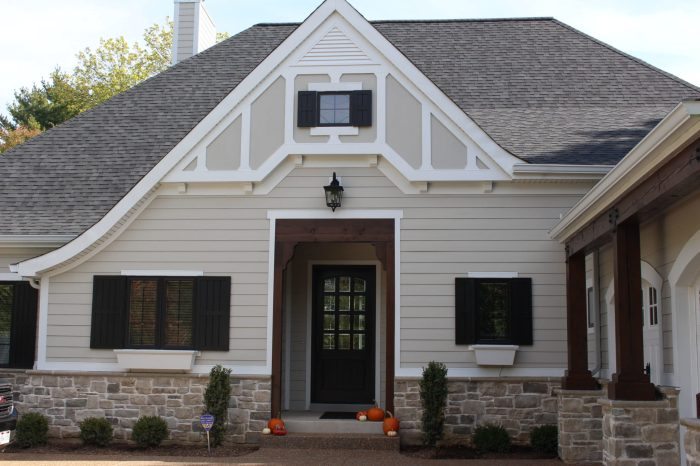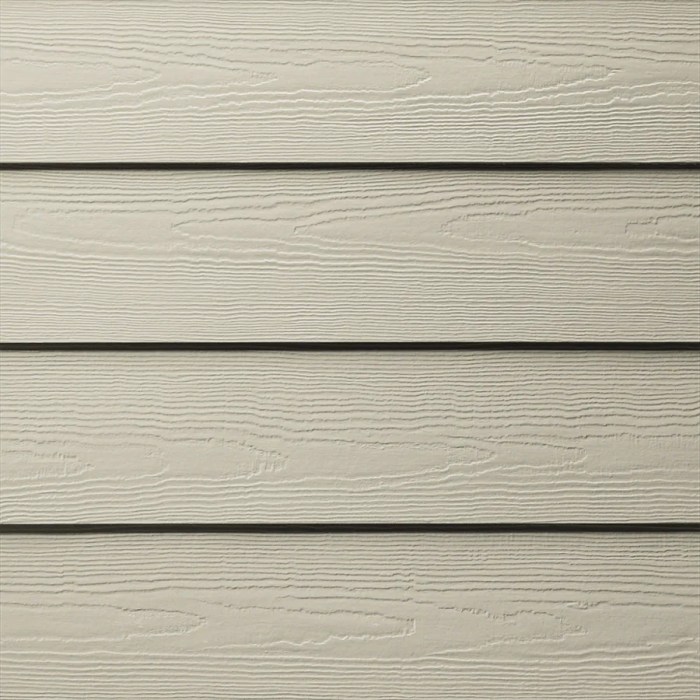Exploring the Versatility of Hardie Cobblestone
Embark on a journey through the world of hardie cobblestone, a versatile material that adds charm and character to any outdoor space. From its composition to applications, this introduction sets the stage for a deep dive into the topic.
Introduction to Hardie Cobblestone
Hardie Cobblestone is a type of durable and versatile building material made from a blend of cement, sand, and cellulose fibers. It is designed to resemble the classic look of natural cobblestone, but with added strength and longevity.
Hardie Cobblestone is known for its ability to withstand harsh weather conditions, including extreme heat, cold, and moisture, making it an ideal choice for both interior and exterior applications. It is commonly used in landscaping, driveways, pathways, and accent walls to add a touch of rustic charm.
Characteristics of Hardie Cobblestone
- Resistant to rot, insects, and fire
- Durable and long-lasting
- Low maintenance and easy to clean
- Available in a variety of colors and sizes
Installation Process
Installing Hardie Cobblestone requires careful planning and precision to ensure a successful outcome. Here is a step-by-step guide to help you through the process.
Gather Necessary Tools and Materials
Before starting the installation, make sure you have the following tools and materials ready:
- Hardie Cobblestone tiles
- Adhesive or mortar
- Trowel
- Level
- Rubber mallet
- Grout
- Grout float
- Sealer
- Measuring tape
- Sponge
Prepare the Surface
Before laying the Hardie Cobblestone tiles, ensure that the surface is clean, dry, and level. Any unevenness or debris can affect the final result.
Apply Adhesive
Using a trowel, apply adhesive or mortar to the prepared surface. Make sure to spread it evenly to create a strong bond with the tiles.
Lay the Tiles
Carefully place the Hardie Cobblestone tiles on the adhesive, starting from one corner and working your way across. Use a rubber mallet to gently tap the tiles into place.
Grout the Tiles
Once all the tiles are laid, apply grout between them using a grout float. Make sure to fill all the gaps evenly and wipe off any excess grout with a damp sponge.
Seal the Surface
After the grout has dried, seal the surface with a suitable sealer to protect the tiles and enhance their durability.By following these steps and tips, you can achieve a beautiful and long-lasting installation of Hardie Cobblestone in your space.
Maintenance and Care

Maintaining and caring for your Hardie Cobblestone is essential to ensure its longevity and aesthetic appeal. By following some simple maintenance practices, you can keep your cobblestone looking beautiful for years to come.
Cleaning and Maintenance
- Regularly sweep or hose down your Hardie Cobblestone to remove dirt, debris, and leaves that can accumulate on the surface.
- Use a mild detergent and water solution to clean any stubborn stains or spills on the cobblestone. Avoid using harsh chemicals that can damage the surface.
- Inspect the cobblestone periodically for any signs of damage or wear, such as cracks or chips. Address any issues promptly to prevent further damage.
- Apply a sealant to the cobblestone every few years to protect it from weathering and to enhance its color and finish.
Common Issues and Solutions
-
Stains:
If your cobblestone is stained, try using a mixture of water and vinegar or a specialized cleaner to remove the stains. Avoid using abrasive materials that can scratch the surface.
-
Weeds:
To prevent weeds from growing between the cobblestones, use a weed killer or pull out the weeds by hand. Regularly inspect the joints between the cobblestones to ensure no weeds are taking root.
-
Cracks:
If you notice any cracks in the cobblestone, fill them with a suitable filler material and smooth it out to prevent further damage.
-
Fading:
Over time, the color of the cobblestone may fade due to exposure to sunlight. Consider applying a UV-resistant sealant to protect the color and finish of the cobblestone.
Design Inspiration

When it comes to designing outdoor spaces, Hardie Cobblestone offers a versatile and stylish option to elevate the aesthetic appeal of your landscaping projects. The unique texture and durability of Hardie Cobblestone make it a great choice for creating beautiful and functional outdoor areas.
Creative Patterns and Ideas
Hardie Cobblestone can be used in a variety of creative ways to add visual interest and charm to your outdoor spaces. Here are some design ideas and patterns to consider:
- Create a classic herringbone pattern for a timeless look.
- Experiment with a random mosaic design for a more eclectic feel.
- Combine different colors of Hardie Cobblestone to create a striking geometric pattern.
Enhancing Outdoor Aesthetic
Hardie Cobblestone can truly enhance the aesthetic of outdoor spaces by adding texture, depth, and visual appeal. Whether used for pathways, patio areas, or driveways, the unique look of Hardie Cobblestone can instantly elevate the overall design of your landscaping project.
Incorporating Hardie Cobblestone
There are countless creative ways to incorporate Hardie Cobblestone in landscaping projects. Here are some examples to inspire you:
- Use Hardie Cobblestone to create a charming garden border.
- Design a stunning outdoor fireplace surround using Hardie Cobblestone.
- Create a picturesque pathway through your garden with Hardie Cobblestone stepping stones.
Concluding Remarks
In conclusion, hardie cobblestone proves to be a valuable addition to landscaping projects, offering durability and aesthetic appeal. As you venture into designing outdoor spaces, consider the endless possibilities that hardie cobblestone brings to the table.
FAQs
How do I maintain Hardie Cobblestone?
To maintain Hardie Cobblestone, regular cleaning with water and mild soap is sufficient. Avoid using harsh chemicals that can damage the surface.
What tools are needed for installing Hardie Cobblestone?
Tools needed include a rubber mallet, a level, a tape measure, and a saw for cutting the cobblestone to fit.
Can Hardie Cobblestone be used for indoor projects?
Hardie Cobblestone is primarily designed for outdoor use due to its durability and weather resistance.




